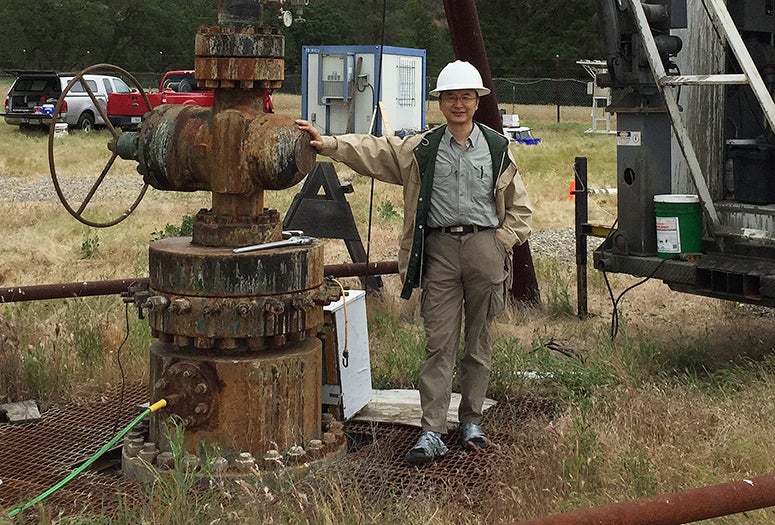by Jade Boyd
Special to Rice News
Rice University seismologist Fenglin Niu has spent nearly 30 years pioneering methods to produce increasingly detailed images of Earth’s interior. It’s fundamental research that has both advanced understanding of the deep Earth and furthered efforts to detect earthquakes before they happen. In recognition of its importance, Niu’s peers in the American Geophysical Union have elected him an AGU Fellow, one of the discipline’s highest honors.

Niu, a professor in Rice’s Department of Earth, Environmental and Planetary Sciences, is one of 54 AGU Fellows elected in September. With nearly 60,000 members in 137 countries, AGU is the world’s largest Earth and space sciences association. Fewer than 0.1% of its members are elected fellows.
In its citation, AGU honored Niu “for leading-edge high resolution seismic imaging of Earth from the crust to the core.”
Niu joined Rice in 2002 after earning doctoral and bachelor’s degrees in geophysics from, respectively, the University of Tokyo in 1997 and the University of Science and Technology of China in 1988. He has published more than 170 peer-reviewed articles, including a 2003 Nature study that used 10 years of data from a highly instrumented portion of California’s San Andreas fault to show it was possible to measure subtle seismic changes that preceded earthquakes. A 2008 study, also published in Nature, offered a proof-of-principle demonstration that the technique could detect telltale signs of an earthquake as much as 10 hours before it happened.
Niu said his research group creates images of Earth’s deep interior at various scales to better understand fundamental chemical and physical processes. He and his colleagues have focused on mapping “fine seismic structures near the boundary layers” between, for example, Earth’s crust and mantle or its mantle and core, because such layers “hold the keys to many fundamental questions of solid-Earth science.”
Election as an AGU Fellow is a personal honor, but Niu said he shares it with the many students and postdoctoral researchers who have been members of his research group.
“It’s wonderful to see (the recognition of) our work on Earth’s boundary layers, especially the findings on the mid-mantle reflectors and hemispheric structure of the inner core,” Niu said.
AGU will officially recognize Niu and its other 2023 fellows at the union’s annual meeting, AGU23, in San Francisco in December.

